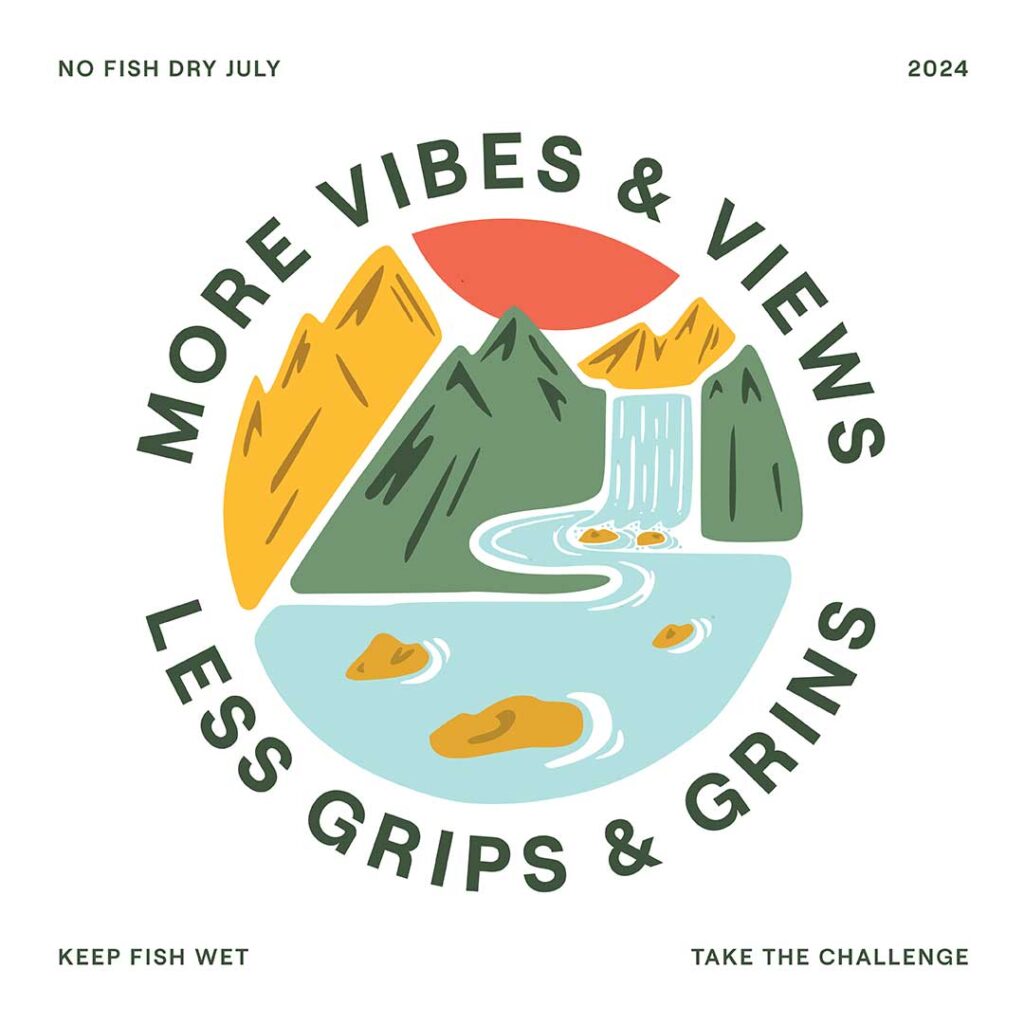
From Keep Fish Wet:
As part of their annual No Fish Dry July campaign, Keep Fish Wet is adding new best practices about water temperature and trout.
Every year for the month of July, Keep Fish Wet encourages anglers to rethink their interactions with fish during hot summer months and challenges everyone to make a commitment to “do better”. Every angler can do their part, whether it is by not taking a single photo of fish for July, using best practices for each fish they catch, or by only targeting warm water species when water temperatures spike.
With many places across North America experiencing higher than average water temperatures, the way we handle fish during the hottest time of year is crucial to their well-being. As water temperatures rise, fish become physiologically stressed, increasing the time it takes for them to recover from capture and handling, and increasing the chance of mortality once released.
This year, Keep Fish Wet is also introducing new best practices about water temperature when fishing for trout. After doing a deep dive into the science on the impacts of water temperature and fishing on various trout species, Keep Fish Wet did not find anything to support the often touted idea that 68F should be the stopping point when fishing for trout. Instead, the science that combines water temperature and angling stress shows that anglers should start to be aware of what’s going on with trout at water temperatures lower than 68F…MUCH lower.
It turns out it’s not as simple as recommending a single “stop fishing here” temperature. There are nuances. So instead, Keep Fish Wet is coining the phrase “angling threshold” — the water temperature at which the chance of a fish dying due to the combined impacts of water temperature and angling goes from being low and steady to rising exponentially. For rainbow, steelhead, cutthroat, and brook trout the angling threshold is 61F. Keep Fish Wet believes this is the water temperature at which anglers need to start paying attention to how these species respond to fishing, and use their science-based Principles and Tips more diligently. Anglers may choose to stop fishing altogether when water temperatures go beyond the angling threshold.
Read their latest fishing insights blog post to learn more about water temperature, trout, and angling thresholds. Follow along on social media as well as at keepfishwet.org to learn about how fish respond when the water gets warm, how you can tell if fish are stressed, and to see some beautiful fish-less photography.
Keep Fish Wet is a nonprofit dedicated to helping anglers improve the outcomes for each fish they release. They are committed to providing science-based best practices for catch-and-release fishing. For more information visit keepfishwet.org




1 Comment
I stitched a “Limit Your Catch, Don’t Kill Your Limit” patch onto the back of my fishing vest way back in the early 70’s, and I’ve been releasing trout, bass and salmon ever since. While “Keep Fish Wet” is an admirable and sentimental initiative which is pretty tough to argue with; I seriously wonder about their campaign to solicit cash donations, which smells, if you’ll forgive the bad pun, a little fishy. They profess to be a non-profit, which is admirable, but are their officers and employees all volunteers? — if not, how much are they paid?
In my experience, catching and releasing fish — of almost any kind — isn’t that difficult, and I seriously wonder why we must endure such a condescending campaign to teach all of experienced anglers how to do it? Tournament bass anglers have pioneered catch & release for almost forty years, tarpon tournaments for at least twenty, and damn near everybody else I’ve fished with all over the country for as long as any of us can remember Isn”t this a classic case of making a mountain out of a mole hill? And then asking money while they do it?
So, let’s cut through the bullshit. It it unreasonable to ask for a little transparency to learn where their solicited dollars are going?